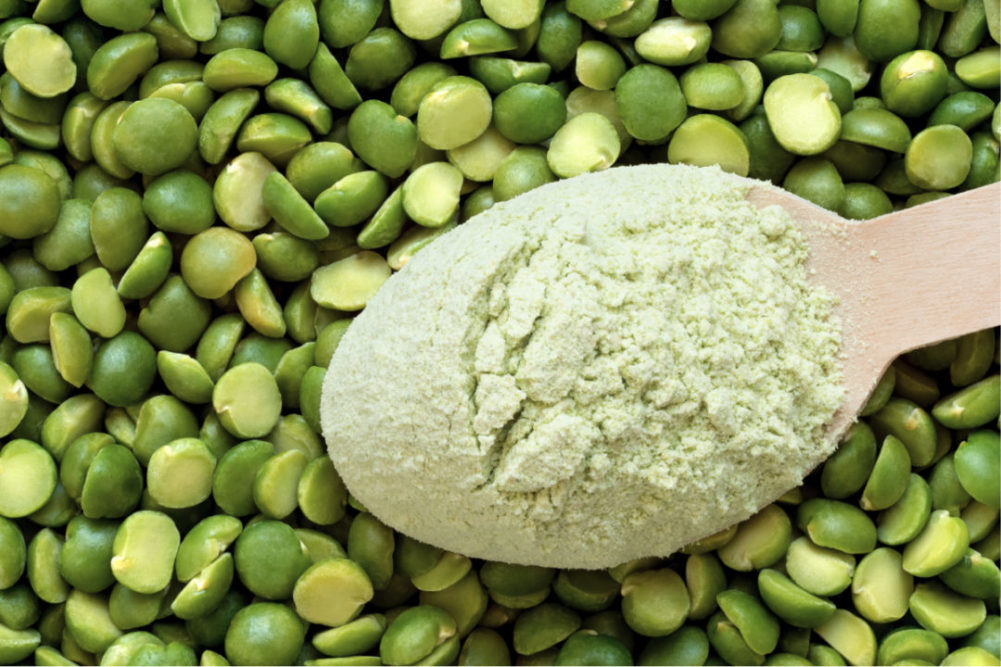Two types of protein derived from peas are pea protein isolate and pea protein concentrate. Pea protein concentrate includes between 60 and 80% protein, whereas pea protein isolate is a highly purified type of pea protein that often contains more than 90% protein by weight. Due to their superior nutritional qualities, as well as their advantages for the environment and human health, both types of pea protein have grown in popularity in recent years. The technical and financial issues of generating pea protein isolate and concentrate will be assessed in this paper.
Visit this Page for More Information: Start a Business in Pharmaceutical sector
Technical Assessment
Wet milling, separation, and drying are the steps used to create pea protein isolate and concentrate. There are various steps in the procedure, which we shall list below:
Dehulling and Cleaning: Cleaning and removing any foreign objects or contaminants from the peas is the first stage. Aspiration and sieving are two mechanical and pneumatic techniques that are used to accomplish this. The process of dehulling, which entails removing the pea’s hull, is performed on the peas after they have been cleaned.
Grinding and Milling: The peas are next milled and ground into a fine powder. The peas are normally ground into particles of a particular size using a pin mill or an air classifier mill for this.
Read our Books Here: Drugs & Pharmaceutical Technology Handbook
Protein Extraction: After that, the pea protein is drawn out of the pea powder using an aqueous solution, usually one that is alkaline like sodium hydroxide or potassium hydroxide. The pea powder is mixed with this solution to make a slurry, which is then divided into two fractions: a fiber-rich fraction and a protein-rich fraction.
Separation: Using a centrifuge or another technique, such as ultrafiltration, the protein-rich fraction is subsequently separated from the fiber-rich fraction. After that, water is used to wash away any remaining alkali or other contaminants from the protein-rich fraction.
Drying: The protein-rich fraction must be dried as the last stage in order to produce pea protein isolate or concentrate. The water is typically removed from the protein-rich fraction by spray drying or freeze drying, leaving behind a dry powder.
Related Feasibility Study Reports: Pharmaceutical, Drugs, Fine Chemicals, Bulk Drug Intermediates, Pharmaceutical Drugs, Pharma Drug Ingredients Intermediates, Drug Intermediates, Speciality Chemicals, Raw Materials, Fine and Specialty Chemicals Intermediates, Pharmaceutical Bulk Drugs
Economic Analysis
Costs associated with the manufacture of pea protein isolate and concentrate include those associated with personnel, equipment, raw materials, and energy. Here, we shall assess each of these expenses:
Costs of Raw Materials: Pea prices vary depending on a number of variables, such as the region, the season, and the quality of the peas. Pea prices currently range from $0.25 to $0.30 per pound, according to recent data. Assuming an 80% yield, 1.25 pounds of peas are required to generate 1 pound of pea protein concentrate. Therefore, the price of raw materials to produce 1 pound of pea protein concentrate ranges from $0.31 to $0.38.
Labor Expenses: Operators, technicians, and quality control staff are needed for the manufacture of pea protein isolate and concentrate. The labour expense to produce 1 pound of pea protein concentrate is roughly $0.10, assuming an average labour cost of $20 per hour and a production duration of 24 hours per day.
Equipment Costs: Milling and grinding equipment, protein extraction equipment, separation equipment, and drying equipment are all needed to produce pea protein isolate and concentrate. The price of this equipment varies according to the device’s size and complexity. According to a $500,000 average equipment cost estimate, it costs around $0.25 to produce 1 pound of pea protein concentrate.
Energy Costs: A lot of energy is needed to produce pea protein isolate and concentrate, including electricity, steam, and gas. Assuming a 24-hour manufacturing cycle and an average energy cost of $0.10 per kWh.
Visit the page Select and Choose the Right Business Startup for You for sorting out the questions arising in your mind before starting any business and know which start-up you can plan.
We, at NPCS, endeavor to make business selection a simple and convenient step for any entrepreneur/startup. Our expert team, by capitalizing on its dexterity and decade’s long experience in the field, has created a list of profitable ventures for entrepreneurs who wish to diversify or venture. The list so mentioned is updated regularly to give you a regular dose of new emerging opportunities.
Click here to send your queries/Contact Us
Reasons for Buying NIIR Report:
- Our research report helps you get a detailed picture of the industry by providing an overview of the industry along with the market structure and classification.
- Our report provides market analysis covering major growth driving factors for the industry, the latest market trends and the regulatory framework of the industry.
- Our Report provides an analysis and in-depth financial comparison of major Players / Competitors.
- Our Report provides indispensable buyers' data with their company financials as well as the contact details, which can be an important tool in identifying the target customers.
- Our report provides forecasts of key parameters which help to anticipate the industry performance.
- We use reliable sources of information and databases. And information from such sources is processed by us and included in the report.
See More Links:
- Start a Business in Asia
- Start a Business in Potential Countries for Doing Business
- Best Industry for Doing Business
- Business Ideas with Low, Medium & High Investment
- Looking for Most Demandable Business Ideas for Startups
- Startup Consulting Services
- Start a Business in Africa
- Start a Business in India
- Start a Business in Middle East
- Related Videos
- Related Books
- Related Projects
- Related Market Research Reports
𝐂𝐨𝐧𝐭𝐚𝐜𝐭 𝐮𝐬
NIIR PROJECT CONSULTANCY SERVICES, DELHI
An ISO 9001:2015 Company
ENTREPRENEUR INDIA
106-E, Kamla Nagar, Opp. Mall ST,
New Delhi-110007, India.
Email: npcs.ei@gmail.com
Tel: +91-11-23843955, 23845654, 23845886
Mobile: +91-9097075054, 8800733955
Website: https://www.entrepreneurindia.co
OF_20Art23
